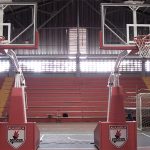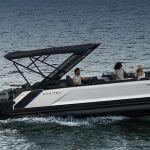According to SGMA’s Manufacturers Sales by Category Report (2012 edition), manufacturers' (wholesale) sales of sporting goods equipment, fitness equipment, sports apparel, athletic footwear, and sports licensed merchandise in the U.S. totaled $77.3 billion in 2011 – a 4.2 percent increase over 2010 when wholesale sales were $74.2 billion.
“For the most part, sales in the sports and fitness industry continue to be a mirror image of the U.S. economy,” said SGMA President Tom Cove. “As the economy begins to improve, Americans are more likely to spend more money on fitness equipment, sports gear, athletic clothing, and footwear. Overall, sports participation remains strong and solid in the U.S. though there is room for growth. We remain optimistic that 2012 will be a significant year of change for the sports industry as people are posed to be more active, play more and, hopefully, increase their spending on sports and fitness items.”
The Manufacturers Sales By Category Report is an industry overview which gives topline wholesale market size data by category, which is derived from industry submissions and survey data.
Sporting goods equipment sales rose slightly up 2.5 percent — from $20.4 billion in 2010 to $20.9 billion in 2011. The five largest categories of sporting goods equipment are:
- firearms/hunting ($2.9 billion);
- golf ($2.5 billion);
- fishing ($2.0 billion);
- camping ($1.80 billion); and
- optical goods ($1.3 billion).
The categories that registered sales gains in excess of 5 percent in 2011 included the following:
- bowling (up 10.0 percent to $217 million);
- water ski (up 8.6 percent to $531 million);
- martial arts (up 5.8 percent to $417 million);
- golf (up 5.7 percent to $2.5 billion);
- lacrosse (up 5.4 percent to $66 million); and
- firearms (up 5.0 percent to $2.9 billion).
A few team sports categories actually had a solid year as sales showed a low single-digit increase. Those sports are lacrosse (up 5.4 percent), volleyball (balls & sets) (up 4.1 percent), soccer (up 2.9 percent), ice hockey (up 1.8 percent), basketball (up 1.4 percent), baseball/softball (up 0.3 percent), and football (up 0.1 percent).
The five leading team sports categories, based on overall sales, are:
- football ($521 million);
- baseball/softball ($489 million);
- basketball ($352 million);
- soccer ($340 million); and
- ice hockey ($243 million).
Exercise equipment is a $4.49 billion business and treadmill sales account for 25.5 percent of that entire category. After treadmills, the next two largest fitness categories are elliptical machines ($1.06 billion) and exercise cycles ($484 million). Consumer/retail spending for exercise equipment accounts for just more than 75% of the entire exercise equipment category. At the consumer level, the top three categories for sales gains were elliptical machines (up 7.1 percent), exercise cycles (up 5.3 percent), and treadmills (up 3.6 percent).
Wholesale sales of sports apparel were $31.4 billion in 2011, which is a 6.1 percent increase from $29.6 billion in 2010. The largest segment of the sports apparel industry — at $4.8 billion is shirts/tops. Swimwear is the second largest segment of the sports apparel business at $2.5 billion. All five divisions of the sports apparel category had an ‘uptick’ in sales in 2011. They were branded activewear (up 9.6 percent to $14.4 billion), performance apparel (up 4.7 percent to $1.3 billion), branded athletic apparel (up 3.3 percent to $14.2 billion), fitness apparel (up 1.7% to $320 million), and team uniforms (up 1.3 percent to $1.1 billion).
“In recent years, tightening athletic budgets prohibited many schools from ordering new uniforms, but 2011 saw an increase in sales which bodes well for the future,” observed Cove.
Sales of sports licensed merchandise, which are largely fueled by emotion, an allegiance to an alma mater, and strong team loyalty, were steady in 2011 — $7.385 billion, which was a 1.3 percent increase over 2010.
“The sports calendar is filled with big time events throughout the year which range from college football bowl games to the Super Bowl to March Madness to major golf events to the World Series to college conference championship games,” said Cove. “There is always another ‘big game’ coming up which is a spending opportunity for fans to show their allegiance to a particular sport, team, or event.”
The athletic footwear category was solid in 2011 as sales actually increased by 4.5 percent from $12.61 billion in 2010 to $13.18 billion in 2011. Running remains the rising star of the athletic footwear category as running shoe sales rose 7.6 percent to $3.89 billion. That was the largest percentage increase of any athletic footwear category. Outdoor/adventure is another strong category as sales increased by 6.1 percent — from $603 million in 2010 to $640 million in 2011. Classics/originals also had a significant 5.6 percent jump in sales from $1.787 billion in 2010 to $1.887 billion in 2011.
The five leading athletic footwear categories are the following:
- running/jogging ($3.89 billion);
- classics/originals ($1.88 billion);
- kid's ($1.87 billion);
- basketball ($875 million); and
- skate/surf ($831 million).
The SGMA's Manufacturers Sales by Category is derived from a combination of aggregated quantitative data that is collected from a sample of manufacturers in a variety of product categories. These raw numbers are then combined with a series of interviews along with other industry data. The end product gives yearly projections on the health of the sporting goods and fitness industry. It should be noted that all figures are based on manufacturers' shipments in the U.S. market and expressed in wholesale, not retail, dollar values.















